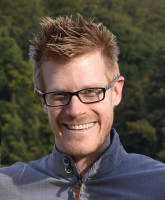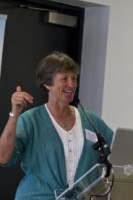Natural Catastrophes
Extreme Weather Events
Volcanic Eruption
Floods & Tsunamis
Landslides & Mudflows
Post-Doctoral Fellowships
United Kingdom
2018.02.28
Post-ERuption Incision of Landscapes (PERIL)
The first-ever coupled volcanic deposition and landscape evolution model to assess secondary volcanic hazards
To develop and calibrate his landscape evolution model, Adams will begin by studying recent volcanic eruptions in populated areas within the Philippines and western North America. The aim will be to constrain how the landscape adjusts after eruptions using aerial and satellite images. « A key aspect of this work will be to quantify patterns of erosion across these landscapes, which are highly dependent on the material properties of the volcanic deposits and the local climate », the researcher specifies. This study will then feed into the development and calibration of the very first landscape evolution model to incorporate the deposition of volcanic material, and predict the spatial extent, duration, and severity of post eruptive secondary hazards such as floods and landslides.
« Over 800 million people live close to active volcanoes. As populations continue to rise around them, there has never been a greater need for a tool that is capable of predicting how a landscape will evolve after a volcanic eruption », Adams presses. Although there has been extensive analysis of the hazards that accompany volcanic eruptions, much less is known about the long‐term consequences of volcanic activity. Adams’ project proposes to fill that gap by coupling volcanologic and geomorphic models – two areas where important progress has been made in recent years. This will allow him to model the processes that unfold over years, or even decades, after a disastrous event. His initiative is answering a long-recognised need for predicting the destructive effects of secondary volcanic hazards.

Byron
ADAMS
Institution
School of Earth Sciences
Country
United Kingdom
Nationality
American
Related articles
Renewable Energy
Space & Planetery
Hydropower & Geothermal Energy
Volcanic Eruption
Geology
Post-Doctoral Fellowship
France
Exploring Geothermal Energy in Young European Volcanic Areas
The quest for sustainable and clean energy sources is imperative for our society's future, and geothermal energy holds promise as... Read more

Ekeabino
MOMOH

